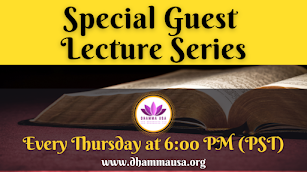The Timeless Beauty of Buddhist Art and Architecture
Keown, Buddhism A Very Short Introduction, 25.
Buddhist art and architecture have significantly influenced the cultural and artistic landscapes of Asia and beyond. From the serene images of the Buddha to the grand stupas and intricately designed temples, Buddhist artistic expressions encapsulate the profound spiritual and philosophical teachings of Buddhism. This essay explores the development, characteristics, and cultural impact of Buddhist art and architecture, drawing on historical examples and references.
Historical Development
Buddhist art and architecture have their roots in ancient India, where Buddhism originated around the 6th century BCE. Initially, Buddhist art was aniconic, avoiding direct representations of the Buddha and instead using symbols such as the lotus, the Bodhi tree, the wheel of dharma, and footprints to signify his presence. This early phase is evident in the art of sites like Sanchi and Bharhut.
With the spread of Buddhism across Asia, the artistic styles began to evolve, incorporating local traditions and artistic influences. The Gandhara school in present-day Pakistan and Afghanistan, influenced by Greco-Roman art, introduced realistic human figures and elaborate drapery into Buddhist sculpture. Concurrently, the Mathura school in India developed a distinct style characterized by robust and sensuous forms.
Characteristics of Buddhist Art
Buddhist art is rich with symbolism and iconography, each element carrying specific spiritual significance. The most common subjects include:
Buddha Images: Statues and paintings of the Buddha are central to Buddhist art. These images depict the Buddha in various postures (mudras) that symbolize different aspects of his teachings, such as meditation, teaching, and enlightenment. Notable examples include the Bamiyan Buddhas in Afghanistan and the Buddha statues in the Ajanta caves in India.
Keown, Buddhism A Very Short Introduction, 23.Stupas: Stupas are dome-shaped structures that house relics of the Buddha or other revered figures. They symbolize the Buddha’s parinirvana (final nirvana) and serve as focal points for meditation and pilgrimage. The Great Stupa at Sanchi, built in the 3rd century BCE, is one of the oldest and most significant stupas.
Bodhisattvas: Depictions of bodhisattvas, enlightened beings who postpone their own nirvana to help others achieve enlightenment, are also prominent in Buddhist art. These figures are often richly adorned and depicted in compassionate poses. Avalokiteshvara, the bodhisattva of compassion, is a popular subject.
Mandalas: Mandalas are intricate, symmetrical designs that represent the universe and are used as meditation aids. They are prevalent in Tibetan Buddhist art and are often created using colored sand or painted on scrolls.
Architectural Marvels
Buddhist architecture encompasses a wide range of structures, each serving specific religious functions and embodying the principles of Buddhist teachings.
Monasteries (Viharas): Monasteries are living quarters for monks and centers of learning and practice. The Ajanta and Ellora caves in India are prime examples, featuring rock-cut monasteries with elaborate carvings and frescoes that depict scenes from the Buddha’s life.
Temples: Buddhist temples serve as places of worship and meditation. They vary in design, reflecting local architectural styles and materials. The Shwedagon Pagoda in Myanmar, with its gilded stupa, and the Mahabodhi Temple in Bodh Gaya, India, marking the site of the Buddha’s enlightenment, are iconic examples.
Pagodas: Pagodas are multi-tiered structures commonly found in East Asia. They evolved from the Indian stupa and often house relics or sacred texts. The Pagoda of Fogong Temple in China, built in the 11th century, is a remarkable wooden structure that exemplifies traditional Chinese architectural techniques.
Chaityas: Chaityas are prayer halls with a stupa at one end, used for congregational worship. The Karle Chaitya in India, carved into rock, is one of the largest and most well-preserved examples, featuring intricately carved pillars and a grand entrance.
Cultural Impact
Buddhist art and architecture have not only enriched the aesthetic traditions of the regions they inhabit but have also played a crucial role in the dissemination of Buddhist teachings and values. These artistic expressions serve as visual scriptures, conveying complex philosophical ideas through accessible and engaging forms. The spread of Buddhism along the Silk Road facilitated a cross-cultural exchange, blending Greek, Persian, Indian, and Chinese artistic elements, which is evident in the diverse styles of Buddhist art.
Furthermore, the construction of stupas, monasteries, and temples often served as community centers, promoting social cohesion and providing education, healthcare, and other social services. This integration of spiritual and social functions has ensured the enduring legacy and relevance of Buddhist art and architecture.
Conclusion
The art and architecture of Buddhism stand as timeless testaments to the religion’s profound impact on culture and society. From the symbolic representations of the Buddha’s teachings to the majestic structures that inspire awe and reverence, Buddhist artistic expressions continue to captivate and enlighten. Through their beauty and symbolism, they offer a window into the spiritual journey of Buddhism, reflecting its core values of compassion, wisdom, and the quest for enlightenment.
References
- Behrendt, Kurt A. The Art of Gandhara in the Metropolitan Museum of Art. Metropolitan Museum of Art, 2007.
- Dehejia, Vidya. Indian Art. Phaidon Press, 1997.
- Snellgrove, David L. Asian Commitment: Travels and Studies in the Indian Sub-Continent and South-East Asia. Weatherhill, 2000.
- Huntington, Susan L. The Art of Ancient India: Buddhist, Hindu, Jain. Motilal Banarsidass Publishers, 1985.
- Keown, D., Buddhism A Very Short Introduction (Oxford: Oxford University Press, 2000).
- Williams, Paul. Buddhism: Critical Concepts in Religious Studies. Routledge, 2005.
- "Mahaparinibbana Sutta: Last Days of the Buddha (DN 16)." Translated by Maurice Walshe. Access to Insight (Legacy Edition), https://www.accesstoinsight.org/tipitaka/dn/dn.16.1-6.vaji.html.
- "The Great Stupa at Sanchi." UNESCO World Heritage Centre, https://whc.unesco.org/en/list/524/.
- "Ajanta Caves." Archaeological Survey of India, http://asi.nic.in/asi_monu_whs_ajanta.asp.


































0 comments:
Post a Comment
Your comments and feedback are very helpful to us in improving our posts. We really appreciate your time. Thank you!
Dhamma USA Team.